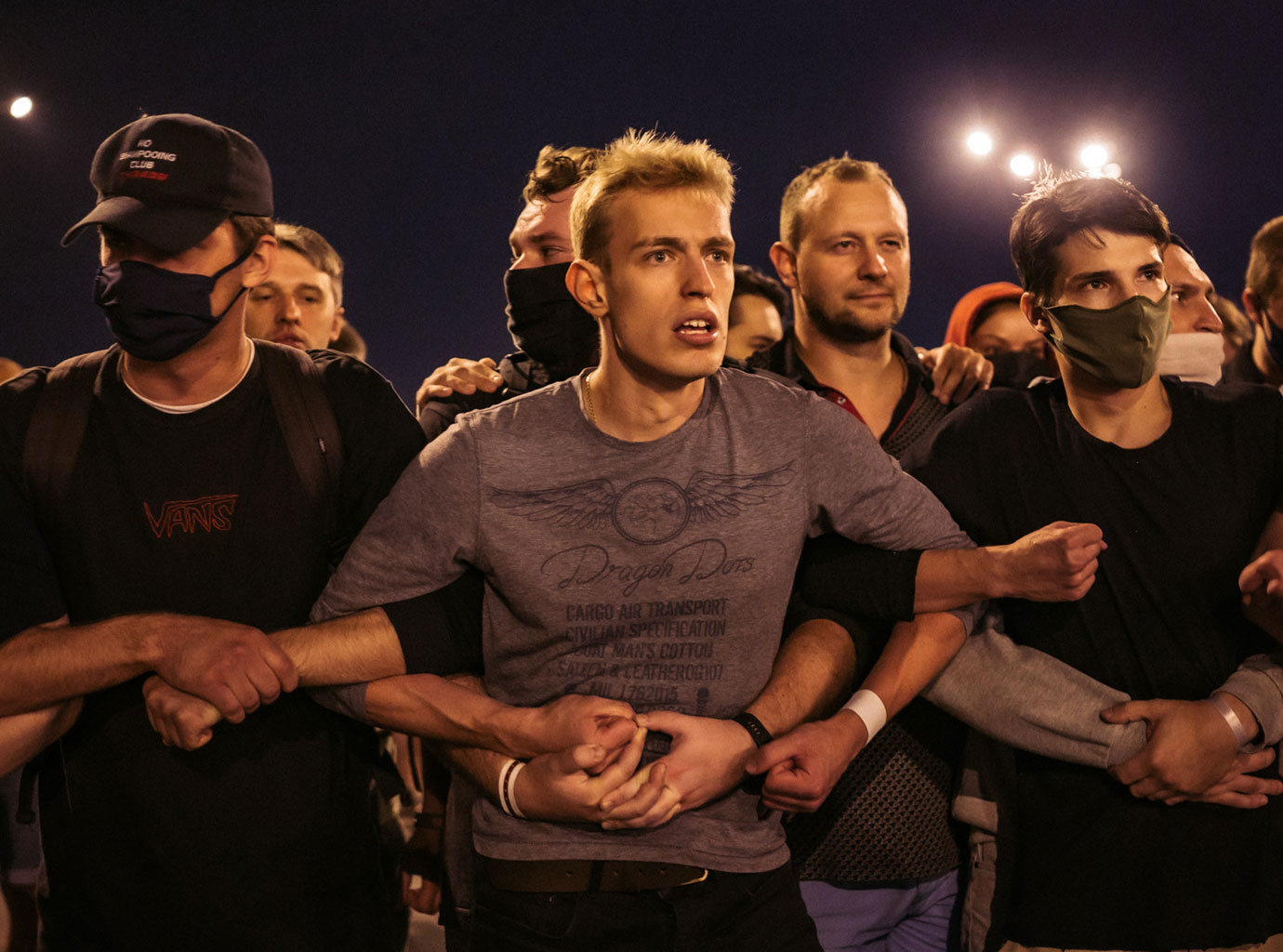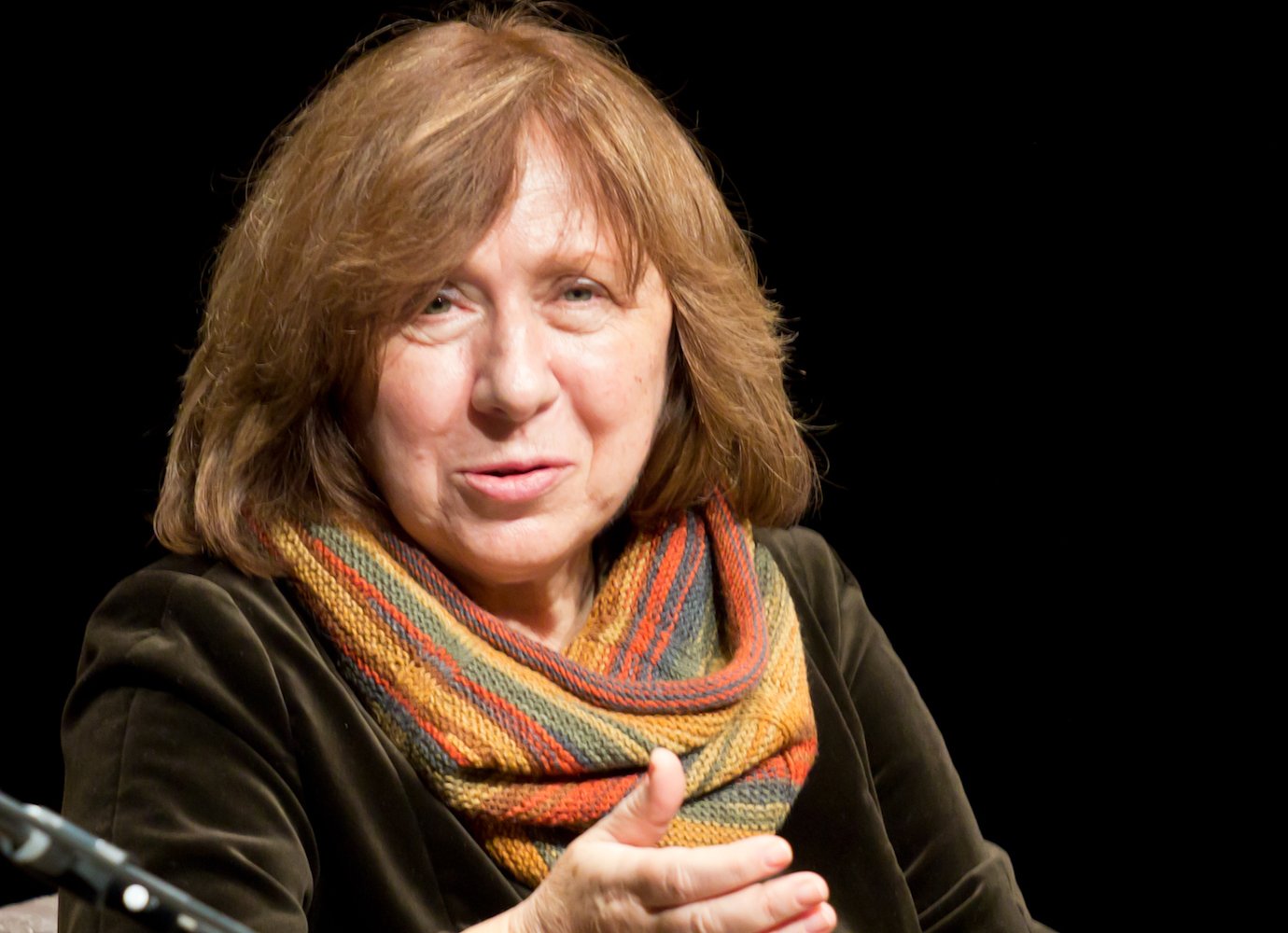9 books, films and artworks that define independent Belarus
After The FallOn 25 August 1991, the Byelorussian SSR declared its independence from the Soviet Union, changing its name to the Republic of Belarus. But the road to freedom that unfolded over the next three decades has been a bumpy one. In 1994, President Alexander Lukashenko came to power for the first time, quickly stamping Belarus with his own iron fist. While the country’s neighbouring Baltic states became more democratic and transitioned to an open market, Lukashenko reverted to authoritarianism. In August 2020, he won his sixth term in office in an election widely dismissed as rigged.
The pro-democracy demonstrations that followed the elections grabbed global headlines — not least because of the brutality of state riot police against unarmed civilians. Both anti-government protests and government repression continue to this day.
As a Belarusian contemporary art publication, we at Chrysalis Mag, have given artists and illustrators our platform to speak out against state oppression. But beyond politics, we also think it’s time for the world to discover the rich culture and art that Belarus has to offer. To remedy this, we’ve selected 9 cultural works that we feel encapsulate the spirit of independent Belarus.
Art
Gift to the President. For a Fruitful 5-year Work! Ales Pushkin
One of Belarus’ most recognisable dissident voices, Ales Pushkin, began his art career in the Soviet Union by staging provocative performances related to historical events. In 1998, he dumped a wheelbarrow of manure outside Belarus’ presidential administration in Minsk in a performance that riled the Belarusian authorities. He scattered three posters on top of the manure heap: one of President Alexander Lukashenko, one with Belarus’ official emblem, and one with the slogan “For Five Years of Fruitful Labour!”. The artist finished by spearing the posters and manure with a pitchfork.
Following the performance — which Pushkin titled “Gift to the President”— Belarusian prosecutors opened a criminal case against the artist. He was eventually sentenced to two years in prison for hooliganism.
Pushkin has since been arrested several times, most recently in 2020, when he was accused of “the rehabilitation and justification of Nazism” at an exhibition of his paintings. Today, he is recognised as a political prisoner and is serving time in the Belarusian city of Zhodino.
Twenty-three years later, “Gift to the President” continues to be relevant, demonstrating Belarusian discontent with Lukashenko’s and repressive regime. In 2021, it was reimagined as an installation and unveiled as part of a major exhibition dedicated to Belarusian protest, Every day. Art. Solidarity. Resistance, at Kyiv’s Mystetskyi Arsenal museum.
Project of the Century (12 from the XX) Vladimir Tsesler and Sergei Voychenko
Poster artists Vladimir Tsesler and Sergei Voichenko began working collaboratively in 1978. Together, they have amassed more than 30 international awards and represented Belarus at the 51st Venice Biennale in 2005. For the occasion, they decided to pay tribute to 12 famous artists: Pablo Picasso, Marcel Duchamp, Andrew Wyeth, Amedeo Modigliani, Jean Tinguely, Vladimir Mayakovsky, Salvador Dali, Kazimir Malevich, Frans Masereel, Gunther Uecker, Victor Vasarely, and Iosif Brodsky.
The catch? Each artist was represented in the Belarusian pavilion as a wooden egg sculpture: a shape chosen as a symbol of life, birth, and renewal. As a whole, the exhibition invited viewers to look back at the pioneers of the 20th century and consider what we should expect from the next 100 years.
The sculptures were made for a more practical reason, too. The duo wanted to make the world’s modern art available for Belarusian people. Taken as such, the “Project of the Century. 12 of XX ” is a gift to the nation and a reminder that with more accessibility, we’ll have more great artists.
Spadchina Cemra
Artist Daria Semchuk works under the name Cemra (“darkness” in Belarusian) to raise socially-important issues through her artworks. Her triptych “Spadchina” confronts the loss of Belarus’ cultural heritage, both through the ongoing negligence of the government — who have left many buildings in disrepair and prefer to promote art that fits with their own vision of the country — and the ignorance and indifference of the Belarusian people.
The triptych presents three well-known images of Belarusian culture — an embroidered shirt, a tapestry, and a photo of a rural home — all defaced by graffiti. Semchuk created the series after finding a national costume in the trash. Now, it serves as a reminder of the role individuals play in preserving cultural artefacts, buildings, and language.
The History of the Belarusian Vyzhyvanka Rufina Bazlova
A simple play on words gets to the heart of Rufina Bazlova’s evocative embroidery. Vyzhyvanka is an invented term created from two Belarusian words: “vyshyvanka”, or traditional embroidered Belarusian clothes, and “vyzhyvat’” which translates as “to survive”. Embroidery has a rich heritage in Belarus. Intricate patterns decorate traditional Belarusian clothes, and it is considered akin to a national art. It is no surprise, then, that national costume has been appropriated as a political tool by artists — including Rufina Bazlova’s protest embroidery. Bazlova is an artist from Grodno who now lives and works in Prague. During the first days of protest after the 2020 presidential election, she quickly captured the demonstrations with witty drawings that mimicked folk embroidery. The series History of the Belarusian Vyzhyvanka quickly went viral. While the drawings seem naive or even funny at first glance, a closer look reveals that they depict grim brutality — imagery that is deemed too distressing for traditional media. One artwork in the series, “RIBBONS”, is dedicated to artist and activist Roman Bondarenko, who died after being detained by police in Minsk. It depicts a fence on which the national flag of Belarus is falling apart. Bazlova, meanwhile, continues to post her work on Instagram in a bid to make sure the world doesn’t forget Belarus’ ongoing fight for democracy.
Belarusian Venus Yana Chernova
In August 2020, as the first stories of police brutality started to escape from the temporary Akrestsin Street detention centre in Minsk, groups of Belarusian women began to gather in the streets. Handing out flowers, they hoped to both protest the regime and protect the male demonstrators who were seen as more likely targets for the police. But many of the women protesters who took to the streets were also beaten, both during street rallies and in detention centres.
Yana Chernova’s Belarusian Venus is a rendition of the figurative nude, only this version shows a bruised female body. The artist captured the provocative image as a symbol of modern Belarus.
Books

Voices of Utopia (1996)
Svetlana Alexievich
Voices of Utopia is a series of five books by the first Belarusian Nobel Prize laureate in literature, Svetlana Alexievich.
Taking between five and seven years to write, each of the books captures life in the Soviet Union through the stories of ordinary citizens, with the author travelling throughout the former USSR with a dictaphone and a notebook in her hands. Voices of Chernobyl is probably the most famous in the series. Pieced together from testimonies of the survivors of the nuclear disaster, it was the first book to speak out on the previously hushed-up impact of the catastrophe on Belarus.
Three books in the series are unflinching accounts of war. The Unwomanly Face of War and Last Witnesses both centre on the Second World War; the first compiling the accounts of women on the frontline; the second focusing on the memories of children. Her next book, Boys in Zinc, was drawn up from interviews with widows, civilians, and soldiers who saw their lives destroyed during the Soviet Union’s 10-year war in Afghanistan. The book sparked outrage and led to Alexievich being put on trial for defaming the Soviet army.
In 2005, Alexievich left Belarus “as a protest” against its authoritarian policies, spending 11 years living in exile around Europe. During this period, she published a book on Russia titled Secondhand Time. Released in 2013, it hit the shelves two years before Alexievich won the Nobel Prize. The book compiles stories from the final gasps of the failing Soviet Union and the years that followed its collapse. Within its pages, we see Russian society separate itself into two separate camps: those who miss and regret the collapse of the USSR, and those who have found a better life in a capitalist world.
Alexeivich has always written and published in Russian; Boys in Zinc was the first of her books to be translated into English. Since the 90s, her books have been published in many languages, with one exception — her native tongue. A 2018 petition to get Voices of Utopia published in Belarusian became Belarus’ biggest crowdfunding campaign on record, far surpassing its target goal. Alexeivich is now currently writing a book about the pro-democracy movement in Belarus from exile in Germany.
Films
Crystal Swan dir. by Darya Zhuk
Belarusian-American director and screenwriter Darya Zhuk bagged an Oscar entry as the Belarusian submission for Best Foreign Language Film for her debut, Crystal Swan. As a symbol, the title alone tells us everything we need to know about post-independence Belarus: crystalline figurines may be found in homes across Belarus, and although they look beautiful, they are in fact cheap and mass-produced. Set in the 90s, the film follows workers in a glass factory who are paid for their labour in crystal products rather than cash — a consequence of the catastrophic economic crash that followed the fall of the Soviet Union. Behind tightly closed doors, we see the everyday violence committed by seemingly “good families”. Away from the assembly line, our characters are trapped in their own vicious cycles, best encapsulated in the quote: “our grandfathers lived this way, we live this way, and our children and grandchildren will live this way”. The film’s protagonist, Vel, stands for the everyday citizens of Belarus, and wants to break free and start a new life for herself in the United States — but many different obstacles already stand in her path.
Pure Art dir. by Maksim Shved
Pure Art isn’t just another street art documentary. In fact, the film is about the very opposite: the Belarusians who commit themselves to covering up graffiti and tags with their own abstract, enigmatic works, a phenomenon known as Housing Maintenance Office art (HMO), or fuprematism. The film traces the emergence of squares, rectangles, and circles across Minsk. The film’s central figures are Zina and Inna, who diligently paint over inscriptions and drawings on the walls of Minsk. Made up of interviews with both the communal painters and passersby, the film reveals the everyday life and creativity of public service workers, who want to keep their city clean, and ultimately, asks us to consider this as an art in and of itself. Candid and funny, the documentary perfectly captures the spirit of Belarus and its people.
Theatre
Error 403 Belarus Free Theatre
In 2013, The New York Times named the Belarus Free Theater as “one of the most powerful underground companies on the planet”. Championing free speech and artistic expression since 2005, the troupe has never been afraid to speak up against Lukashenko’s government. In their work, the company touches on topics spanning social justice, unspoken taboos, and the abuse of human rights. While its founders are now based abroad, the theatre maintains a strong presence in Belarus and is committed to educating the next generation of performers. The play Error 403 is of a seemingly average man who enjoys watching football and spending time with his son. But his life is anything but wholesome: he is also part of Belarus’ elite Almaz anti-terror force who are tasked with suppressing peaceful protests. The performance was made in response to the killing of a 34-year-old protester in Minsk, who died after being shot in the chest by the same police unit, and the many others who have died at the hands of Lukashenko’s forces.




